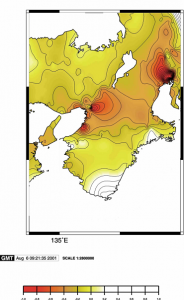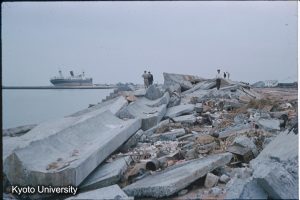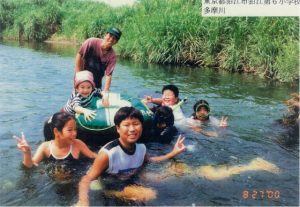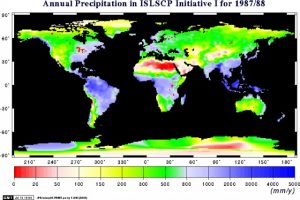━━━━━━━━━━━━━━━━━━━━━━━━━━━━━━━━━━━
【JWF News Vol.158】 For the Success of the Third Asia-Pacific Water Summit
November 15, 2017
━━━━━━━━━━━━━━━━━━━━━━━━━━━━━━━━━━━
◇Contents◇
・3rd Asia-Pacific Water Summit (December 11-12, Myanmar)
・Foreword For the Success of the Third Asia-Pacific Water Summit
━━━━━━━━━━━━━━━━━━━━━━━━━━━━━━━━━━━
3rd Asia-Pacific Water Summit (December 11-12, Myanmar)
The 3rd Asia-Pacific Water Summit (APWS) will be held in Yangon, Myanmar on 11th-12th December 2017. The 3rd APWS will be co-hosted by the Republic of the Union of Myanmar and Asia-Pacific Water Forum (APWF) under the overarching theme “Water Security for Sustainable Development”.
▼For more information, please visit the 3rd APWS website▼
http://apwf.org/summit/myanmar2017/
━━━━━━━━━━━━━━━━━━━━━━━━━━━━━━━━━━━
・Foreword For the Success of the Third Asia-Pacific Water Summit
By Kotaro Takemura, Chair of the Japan Water Forum
━━━━━━━━━━━━━━━━━━━━━━━━━━━━━━━━━━━
Economic Development and Water Problems
Water is an essential resource for every country. Economic development is closely related to water. The reality, however, is that our relationship with water can usually be described as a series of failures.
For the economic development, great amounts of water are required. Since the volume of river water varies over time, without dams life would be thrown into chaos because of serious water shortages in times of drought.
In utilizing groundwater, we often make mistakes. Because groundwater is invisible, people tend to use it excessively. As a result, groundwater levels become lower and lower and we have to dig our wells deeper and deeper. This triggers land subsidence, particularly on alluvial plains, exposing areas to the risk of flooding and making them vulnerable to storm surges.
We have repeatedly failed to control not only the quantity of water, but also its quality.
If a large amount of wastewater is discharged into rivers or lakes without treatment, the water will be polluted and become undrinkable. Even if there is water available to us, we can’t use it. The negative side of human development is revealed in water problems.
These are not the failures of other countries, but of Japan.
Japan’s Failures
After World War II, Japan saw rapid economic development. In the absence of sufficient water supply facilities, we extracted groundwater excessively, causing land subsidence on alluvial plains across the country.
Figure-1 is a map showing land subsidence in Nagoya and Osaka. The ground level there was below sea level, so there appeared a vast zero-meter area. In 1959, the Typhoon Vera hit Nagoya, storm surges caused by the typhoon breached breakwaters and swept through areas below sea level, causing catastrophic damage and 5,098 victims. (Picture-1)
Japan also made a great mistake regarding water quality. While wastewater treatment facilities were inadequate, large amounts of untreated water were discharged into rivers. The rivers quickly became polluted (Picture-2).
It took many years and a huge amount of money before we restored good water quality to the environment. The rivers have been gradually purified and have now become good playgrounds for our children. (Picture-3)
 |
 |
| Figure-1 Land subsidence in Nagoya and Osaka Source: MLIT |
Photo-1 Breakwaters collapsed by Typhoon Vera in 1959 「四日市 磯津(1959)」DPRI PIC 2016/01/1006/A/1006-04/1959, 京都大学防災研究所伊勢湾台風高潮被害調査資料, 1959, 2010. (DPRI PIC 2016/01), 京都大学(京都大学研究資源アーカイブ). > 撮影:岩垣雄一(京都大学名誉教授) > 整理:間瀬肇(京都大学防災研究所教授) |
|
|
|
| Photo-2 Tama-river 50 years before, Tokyo Source: Bureau of Waterworks Tokyo Metropolitan Government |
Photo-3 Children swimming in the Tama-river, Tokyo Source: MLIT |
Multinational Networks
How can developing and emerging countries avoid repeating these failures?
Here is only one way: learn from the failures of advanced countries. Advanced countries made mistakes in controlling water during their development. Overcoming these failures cost great amounts of money and strenuous efforts.
By learning from these failures, developing countries can prevent the same water problems from occurring. Water problems are specific to each country, but in order to solve our problems, we need networks for exchanging knowledge and experience among different countries.
We do have one global-level network that discusses water problems and exchanges information: the World Water Forum. Every three years, politicians, administrators, representatives of international organizations, academics, and NPOs get together to discuss current water problems and exchange information on solving them. By exchanging information on such occasions, we become aware that water problems are not unique to one country, but universal, and that we are not isolated. Of course the world is so large that the water situation differs greatly between each continent.
Cooperation among Asia-Pacific Countries
Asia and the Pacific, where we live, consists of the land located in the southeastern part of the Eurasian Continent and numerous islands in the Pacific Ocean. Countries in this area have one thing in common: the Asian monsoon region. Figure-2 shows global precipitation data.
|
|
| Figure-2 Global precipitation data Source: ISLSCP Initiative |
The Asian monsoon region enjoys abundant rain, but most of the area is mountainous, and the flat lands are soft and unstable alluvial plains. When it rains, water flows down the mountains, running into the sea. Therefore, people suffer from flooding and at the same time experience occasional droughts. In other words, The Asia-Pacific region suffers from both too much and too little water. It is useful for people in the region, who live in the same climactic zone, to gather and share their experience and knowledge. This will create a common intellectual platform that can help solve the water problems of each country.
Various administrative bodies are involved in water issues. Therefore, in dealing with water problems, the highest level decision-makers, who stand at top of administrations, must fully understand the problems and sincerely commit themselves to solving them. The Asia-Pacific Water Summit is an opportunity for these decision-makers to discuss water problems freely and thoroughly.
The 3rd Asia-Pacific Water Summit will be held on December 11th and 12th this year in Yangon, Myanmar.
This is the 3rd summit following Oita, Japan and Chaing Mai, Thailand. JWF staffs are working hard to prepare for their role as secretariat of the summit.
━━━━━━━━━━━━━━━━━━━━━━━━━━━━━━━━━━━
▼JWF News Achives▼
https://www.waterforum.jp/en/news_en/newsletter_en
If you wish to post information on our bulletin board, or should you prefer not to receive further JWF News, please contact us. You can also get in touch regarding changes of address, or any other comments or requests.
■━━━━━━━━━━━━━━━━━━━━━━━━━━━━━━━━━■
JWF News Vol. 158 November 15, 2017
Japan Water Forum
6th fl., 5-4 Nihonbashi-Hakozaki-cho, Chuo-ku, Tokyo, 103-0015
TEL: 03-5645-8040 FAX: 03-5645-8041
E-mail: news[at]waterforum.jp URL: https://www.waterforum.jp/en/
※Please change [at] to @
■━━━━━━━━━━━━━━━━━━━━━━━━━━━━━━━━━■



